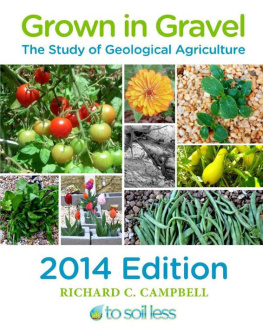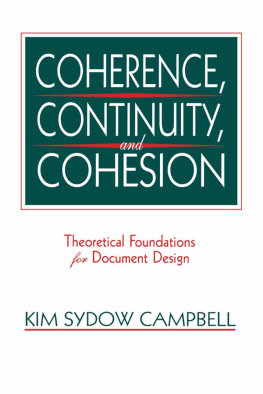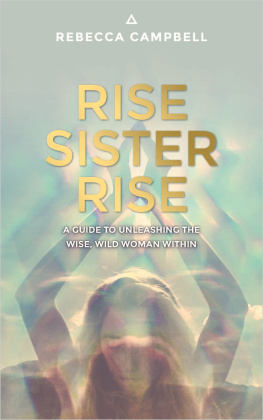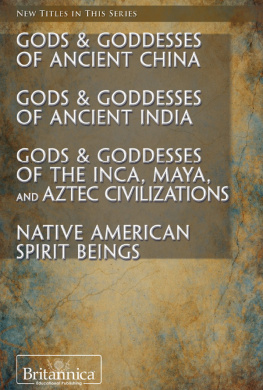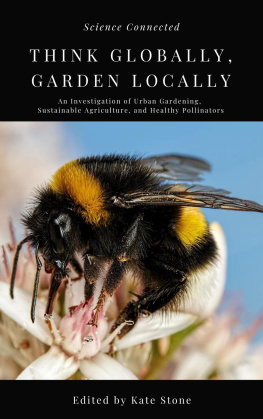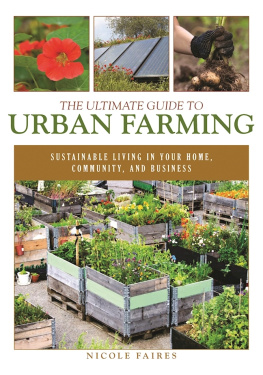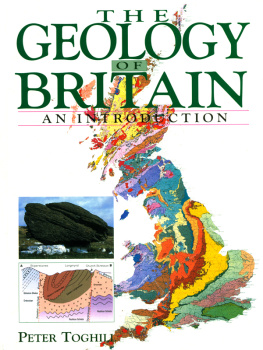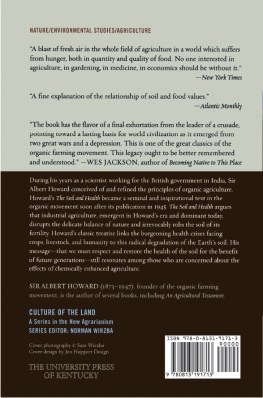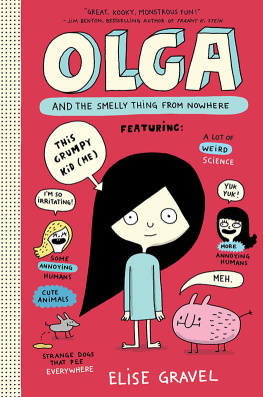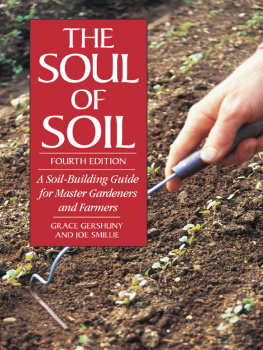
2014 EDITION
2014 EDITIONBYRICHARD C. CAMPBELL
New Contributions by:
Dr. H. Henry Teng, Dept. Chemistry, Geology Program; Environmental Resource Policy Program - The George Washington University
Arvazena (Zena) Clardy Ph.D. Assistant Professor of Horticulture, 4-H SET and NRCS Outreach - Tennessee State UniversityPublished byAlkyne Media Group
First edition as To Soil Less: Residential 2011 by Richard Campbell.Second edition as Grown in Gravel: Home Gardener 2012 Edition.Copyright by Richard Campbell. Third edition as Grown in Gravel: For Home, Community Gardeners and Educators 2013.Fourth edition as Grown in Gravel: The Study of Geological Agriculture 2014 Edition Copyright by Richard Campbell.
Contributions from Dr. Thomas Logan, Dr. Zena Clardy and Dr. Henry Teng Edited by Yola Balde
Cover Graphics by Jamal Pope
Photography by Richard Campbell except where noted
All rights reserves.
ISBN 978-0-578-14211-1
2012 Copyright - 1-7347869312014 Copyright - 1-1612111401Published in the United States of America by Create Space / Alkyne Media GroupOriginally published online in 2011Manufactured in the United States of America
2011201220132014
I.Forward by Author- 5Contents
II.Welcome
III.Gravel Gardening Benefits
IV.The Issues with Soil
V.Current Gravel Methods - 9
VI.Geological Agriculture Definitions
VII.Gravel Gardening Basics
VIII.Materials
IX.Gravel Gardening Seed Testing
I.Tennessee State University Germination Study
II.Transplanting From Gravel to Soil
III.Water Testing - 26
X.Building Your Gravel Garden XI.Gravel Gardens In Action
I.Cucumbers, Lettuce, Marigolds, Gardens, Tulips and more XII.Nutrition Testing : Cucumbers
XIII.Nuances of Gravel Gardening - 50
I.Water Behavior
II.Root Behavior
III.Gravel Garden Eco System
IV.George Washington University - Gravel Composting Study - 60
V.Living with Your Gravel Garden
XIV.Alternative Applications
I.Greenhouse
II.Sample Configurations
III.Gravel Gardening on Cement
IV.Hay gravel gardens- 79
V.Rooftop Gardens
VI.Small Farms
VII.Survival gravel gardens
XV.Tools of Gravel Gardening
XVI.Gravel Gardening Costs
XVII. Things to Remember
XVIII. Education Activity
XIX.Gravel Gardening Gallery 2014
XX.Glossary of Terms - 1155XXI.To Soil Less
Forward by Author
Each year we issue a new edition in the study of geological agriculture or gravel gardening.This years 4th edition includes academic contributions from George Washington University(GWU) and Tennessee State University (TSU).Professors at GWU examined geologicalcharacteristics, while professors and students at TSU assessed baseline agriculture aspectsof geological agriculture.Combined, these studies begin to shape the academic buildingblocks of this new science.This edition includes a 16-page gravel gardening gallery of thepast year along with the first geological agriculture glossary of terms, which introduces avariety of new terms to describe the process of the rock based crop sustainment.
It has been a fulfilling yet challenging journey seeking to bring to reality the notion thatrocks can produce crops; getting life out of something thought dead.For now, I refer tomyself as Pheidippides of ancient Greece who is the central figure in the story of themarathon. He is said to have run the 26 miles from Marathon to Athens to deliver news of amilitary victory against the Persians. Like Pheidippides, I find myself running to tell the newsthat rocks can grow crops.Since this is still a relative secret in society of news untold, myjourney is not over.Soon however, my run should become easier as society begins toembrace the notion of geological agriculture.
On the back cover in fine print, you may notice the phrase Make the workmanship surpassthe materials by Ovid, a Roman poet. My mentor and uncle, Dr. Thomas Logan said this tome at the completion of this book.But his statement is meant more for you than me.Torephrase, the material is gravel or simple rocks; what you do with them is what matters.The workmanship with gravel to produce food surpasses the gravel itself. Simply put, makegravel gardening surpass the gravel.
As a young science, much is to be discovered, revealed and fine tuned with geologicalagriculture. As an individual, I can only take this new science and all it has to offer so far.Atsome point, geoag should take on a life of its own and society can take a step closer towardsfood security.We applaud all those who have been courageous enough to take a secondlook at rocks. If rocks + seeds + water = food, what does this mean for world hunger?
Everything we know so far about geological agriculture is included in this 4th edition.Wehope you find it useful.Good luck and enjoy.
Welcome
Welcome to the world of geological agriculture. Your first step in alternative gardening 2.0; gravelgardening.This guide will outline the steps necessary to incorporate gravel gardening techniquesand practices into your home and growing environments.You will learn 1) the basics and thescience behind gravel based agriculture, 2) materials required, and 3) Various applications andmanagement techniques. Once you lay your gravel garden correctly, you should not have tochange nor replace your gravel for many years, while producing crops each year.
Geological Agriculture is the process of growing vegetables and flowers in an all rock or gravelenvironment. Also known as geo-agriculture or gravel gardening, this method of cultivating cropsenables vegetation to occur and sustain itself with limited to no use of soil and fertilizers..
The study of geological agriculture is in its infancy as it was discovered by accident in 1994 by Dr.Thomas Logan and Richard Campbell.To Soil Less was founded by Richard Campbell in 2009 toresearch the attributes of geological agriculture and share this approach to crop cultivation withthe greater society.
Each year To Soil Less produces a new manual on geological agriculture called Grown in Gravel,which includes the body of research accumulated since the prior year.In this 2014 version ofGrown in Gravel, contributions from the Tennessee State University School of Agriculture and theGeorge Washington University School of Applied Sciences are included along with observationsconductedatLowellSchoolK-8inWashington, DCandatYuYingElementarySchoolinWashington, DC.
Review the entire manual prior to starting the construction of your gravel garden. You can misstepand have no growth if certain procedures are not followed. All images takes are of crops grown ingravel except where noted.
Gravel Benefits
There are several key benefits to adopting gravel gardening techniques to the gardening, agriculture or crop cultivation process as follows:
1.Reduced Soil Use When you go gravel, you no longer need to use soil to grow your
vegetables, flowers, and most fruits. You can mix soil with gravel if you choose, but gravel by itself can cultivate crops. This point has been fully substantiated by the Tennessee State University Germination Study.
2.Less Watering Proper construction requires a semi-enclosed environment where water is held in the gravel gardening system longer. Consequently, outdoor gravel gardens use over 50% less water.
3.Reduced reliance on Fertilizers The gravel itself provides the basic nutrient materials tosustain plant growth. Fertilizers are not necessarily needed in the cultivation process withgravel.
4.Less Weeding Proper construction requires several layers of plastic and lawn fabric underneath the gravel. The barrier of lawn fabric and plastic prevents soil based weeds from growing in the gravel garden. Consequently, gravel gardens reduce the need for weeding and nearly eliminates the need for weeding products.Airborne weeds will still land on the gravel and can grow.
Next page
